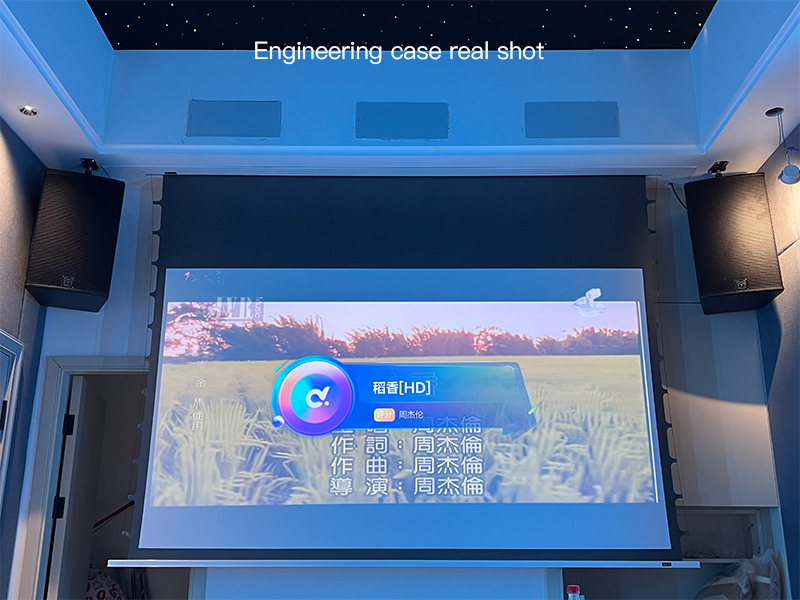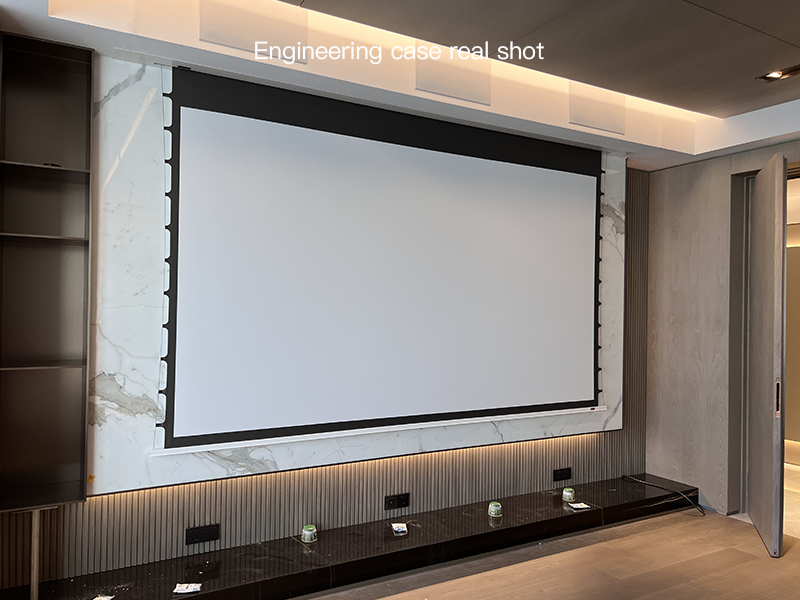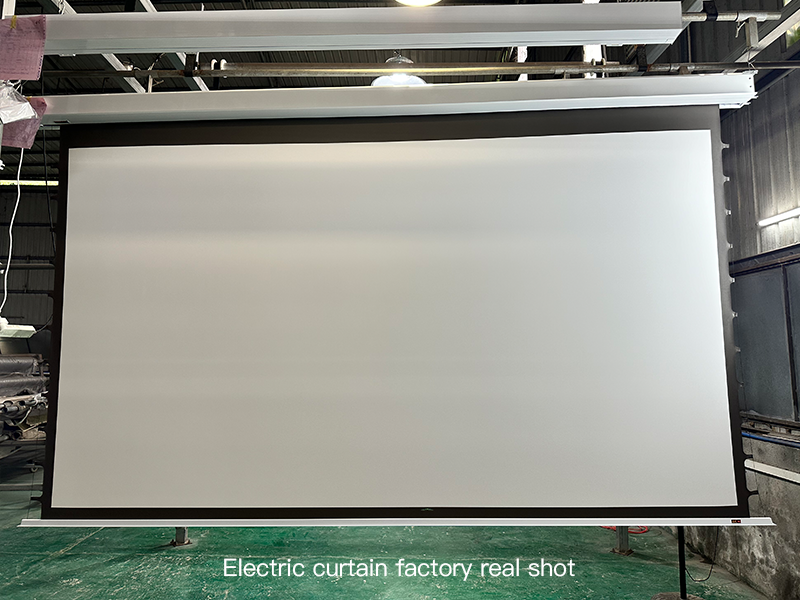“Light sensitivity” has long been a common pain point for projection-based systems. The inherent nature of image formation by diffuse reflection makes projectors highly susceptible to ambient light interference. However, observant users may have noticed that indirect ambient light—such as light from a shaded window, reflections from carpets, or even subtle mood lighting in a media room—has a much weaker impact on the projected image. The fundamental reason lies in the way projected light is reflected by the screen into the viewer’s eyes. Even in brightly lit conditions, as long as the ambient light does not directly align with the angle of reflection toward the viewer, its effect remains minimal. This has led to the development of various anti-glare solutions for projectors.


The standout advantage of long-throw anti-light screens is their ability to significantly improve image quality under challenging lighting conditions. Whether it’s during the day with curtains open or in the evening with indoor lights on, these screens allow viewers to enjoy a clear picture without the need for a completely darkened room. The key feature of anti-light screens is their capacity to filter, absorb, and reject ambient light, thereby enhancing image contrast, light-and-shadow detail, color vividness, hue accuracy, and saturation. Those familiar with projectors are likely no strangers to anti-glare screens. It’s worth noting that there are both long-throw and short-throw variants, and each is designed for specific types of projectors.
Conventional projection screens are typically standard white mats—essentially diffuse reflectors, not unlike a plain white wall. A projection screen serves as a passive surface that relies on light from the projector to form an image. In the case of front-projection screens, the picture we see is the result of reflected light entering our retinas. The light emitted by the projector carries optical energy. Standard diffuse reflection screens scatter incoming light across a 180-degree range.

Within that wide angle, our eyes capture less than 1% of the total reflected light. The remaining 99% or more is dispersed throughout the room. This is why, even in a completely dark space, turning on the projector doesn’t just illuminate the screen—it brightens the entire environment. A portion of this scattered light reflects off other surfaces back onto the screen, superimposing itself on the original image. This can reduce contrast or, in more severe cases, distort color reproduction.
Anti-light screens employ specialized optical coatings and physical structures to combat this issue. They are designed not only to absorb ambient light from the surroundings but also to direct the projected light toward the viewer’s position. This drastically reduces wasted scattered light and significantly improves light efficiency. As a result, the viewer’s eyes receive more useful optical energy with less interference, leading to noticeable improvements in color performance, brightness, and contrast. This is the underlying reason why anti-glare screens deliver far superior performance compared to standard diffuse screens.
That said, if you observe that a long-throw anti-light screen appears noticeably dimmer than a standard white screen or a white wall, it may be because the screen is prioritizing contrast and color accuracy over raw brightness. In such cases, a projector with at least 3,000 lumens is recommended to achieve optimal results. A high-quality long-throw anti-light screen should deliver a balanced performance: enhancing contrast, color reproduction, saturation, and ambient light rejection—all essential for maintaining a premium viewing experience in well-lit environments.


